
100 œuvres qui racontent le climat
ECR French Nineteenth-Century Art Network Research Forum:
« 100 œuvres qui racontent le climat »
Servane Dargnies-de Vitry - Musée d’Orsay, Paris
Tuesday 27 May 2025 // 1600 (BST) // 1700 (CEST) // 1100 (EDT) // 0800 (PDT)
** Please note this session will be given in French **
« 100 œuvres qui racontent le climat » est une initiative du musée d’Orsay qui interroge la manière dont les œuvres du XIXe et du début du XXe siècle permettent de penser les enjeux climatiques contemporains. Sans prêter aux artistes des intentions qu’ils n’auraient pu avoir, le projet s’appuie sur le constat que de nombreuses dynamiques à l’origine du changement climatique trouvent leur origine dans la période couverte par les collections du musée, marquée par la révolution industrielle et l’entrée dans l’Anthropocène. À travers une sélection de cent œuvres, il s’agit d’éclairer les représentations de la nature, des paysages, des ressources et des bouleversements environnementaux en cours. Servane Dargnies-de Vitry reviendra sur la genèse de ce projet et de l’ouvrage collectif qui l’accompagne, conçu en dialogue avec des experts du climat. Ce projet a également une dimension territoriale, avec des prêts d’œuvres en région, pour engager un dialogue élargi autour des enjeux écologiques.
Servane Dargnies-de Vitry est conservatrice en chef peinture au musée d’Orsay. Elle a été commissaire de plusieurs expositions, notamment « Boldini. Les Plaisirs et les jours » (Petit Palais, 2022, avec Barbara Guidi), « Louis Janmot. Le Poème de l’âme » (musée d’Orsay, 2023, avec Stéphane Paccoud), « Théodore Rousseau. La Voix de la forêt » (Petit Palais, 2024) et « Christian Krohg, Le peuple du Nord » (musée d’Orsay, 2025, avec Vibeke Waallann Hansen). Ses recherches portent sur les relations que l’art du XIXe siècle entretient avec les idées politiques, sociales et environnementales. Elle est commissaire de l’opération « 100 œuvres qui racontent le climat » avec le musée d’Orsay, de mars à juillet 2025.
—
“100 œuvres qui racontent le climat” is an initiative by the Musée d’Orsay that explores how 19th- and early 20th-century artworks can help us think through today’s climate issues. Without attributing intentions to artists of the period that they could not have had, the project is based on the observation that many of the dynamics at the root of climate change originated during the period covered by the museum’s collections—an era shaped by the Industrial Revolution and the onset of the Anthropocene. Through a selection of one hundred works, the project sheds light on representations of nature, landscapes, resources, and ongoing environmental upheavals. Servane Dargnies-de Vitry will retrace the genesis of this project and the collective publication that accompanies it, conceived in dialogue with climate experts. The initiative also has a geographic dimension, with works being loaned to regional institutions to foster broader conversations around ecological challenges.
Servane Dargnies-de Vitry is Chief Curator of Paintings at the Musée d’Orsay. She has curated several exhibitions, including Boldini. Pleasures and Days (Petit Palais, 2022, with Barbara Guidi), Louis Janmot. The Poem of the Soul (Musée d’Orsay, 2023, with Stéphane Paccoud), Théodore Rousseau. The Voice of the Forest (Petit Palais, 2024), and Christian Krohg. The People of the North (Musée d’Orsay, 2025, with Vibeke Waallann Hansen). Her research focuses on the connections between 19th-century art and political, social, and environmental ideas. She is the curator of the “100 Works that Tell the Climate Story” project at the Musée d’Orsay, on view from March to July 2025.
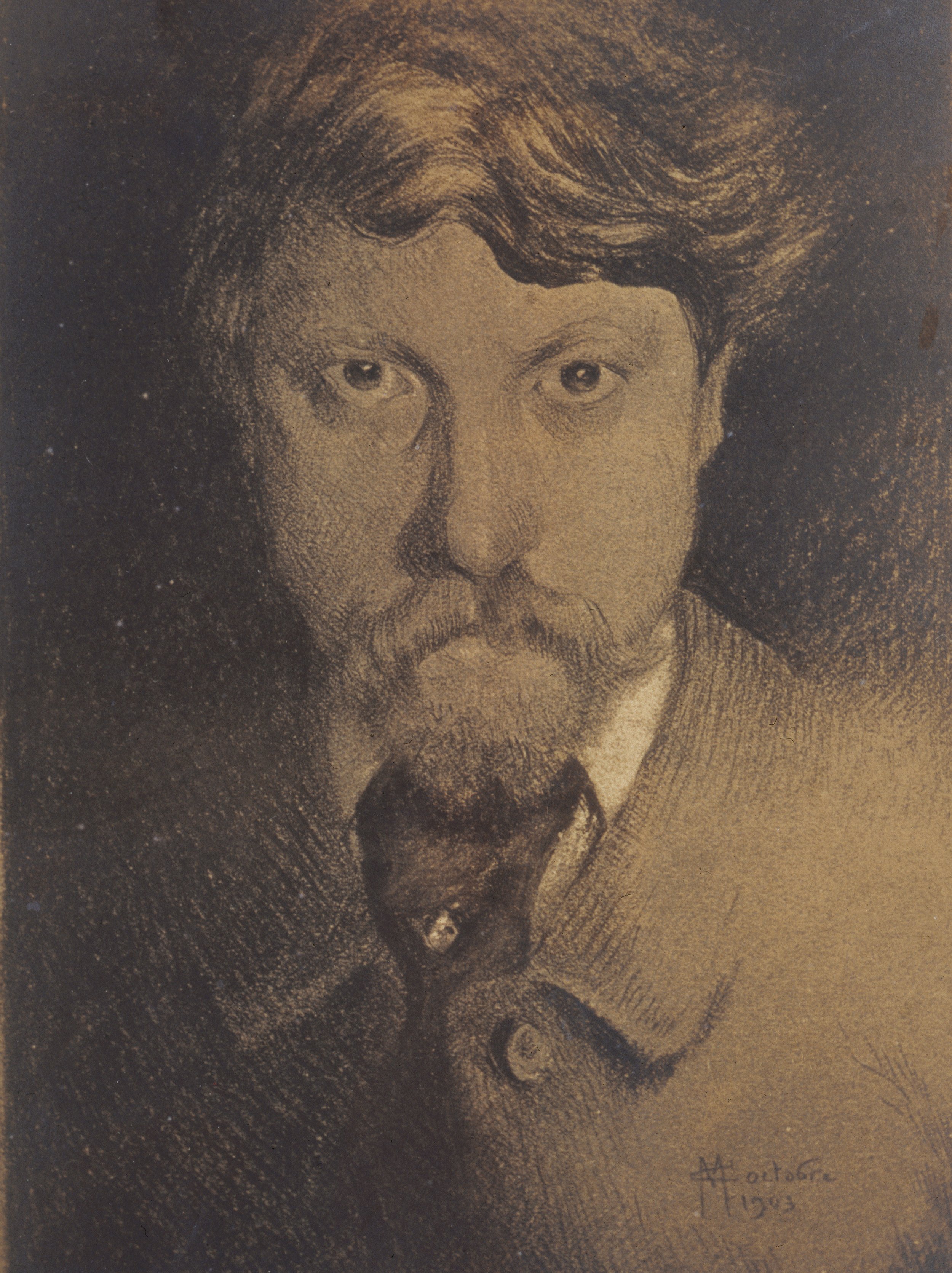
Camille Mauclair and the Shaping of Impressionism: Critical Strategies and Networks before and after World War One
ECR French Nineteenth-Century Art Network Research Forum:
Camille Mauclair and the Shaping of Impressionism: Critical Strategies and Networks before and after World War I
Dr. Katia Papandreopoulou - University of Patras, Greece
Wednesday 11 June 2025 // 1600 (BST) // 1700 (CEST) // 1100 (EDT) // 0800 (PDT)
** Please note the change of time **
The critic, Camille Mauclair promoted the concept of a “French” art within an ever-changing market. From the beginning of the twentieth century, he engaged in the discourse on an idea of a national art, often linked to the concept of “national genius,” his key phrase on the contribution of Impressionism’s legacy. His groundbreaking art criticism entwined the concepts of national, French art with Impressionism, a movement that had previously connotated different aesthetic and political principles. This paper will discuss how the writing of art history by art critics such as Mauclair marked the conceptualisation of Impressionism. It traces his strategies across the editorial, the reception, and the institutional, to explore his theories in the first three decades of the twentieth century. Finally, this talk will address how Mauclair and his intellectual and political allies of the interwar period presented the movement as an alternative to modernism.
Katia Papandreopoulou is an Assistant Professor of Art History at the University of Patras, Greece. She received her master’s (2006) and doctoral (2013) degrees at the Paris I, Panthéon-Sorbonne University. Her thesis was awarded the Prix du musée d’Orsay and published by Peter Lang (Camille Mauclair (1872–1945), critique, théoricien et historien de l’art. Un chemin périlleux entre cosmopolitisme et nationalisme sous la IIIe République, Peter Lang, 2024). She specializes in 19th- and 20th-century art and art criticism, the history of art exhibitions, and racist and nationalist discourses in the history of art.
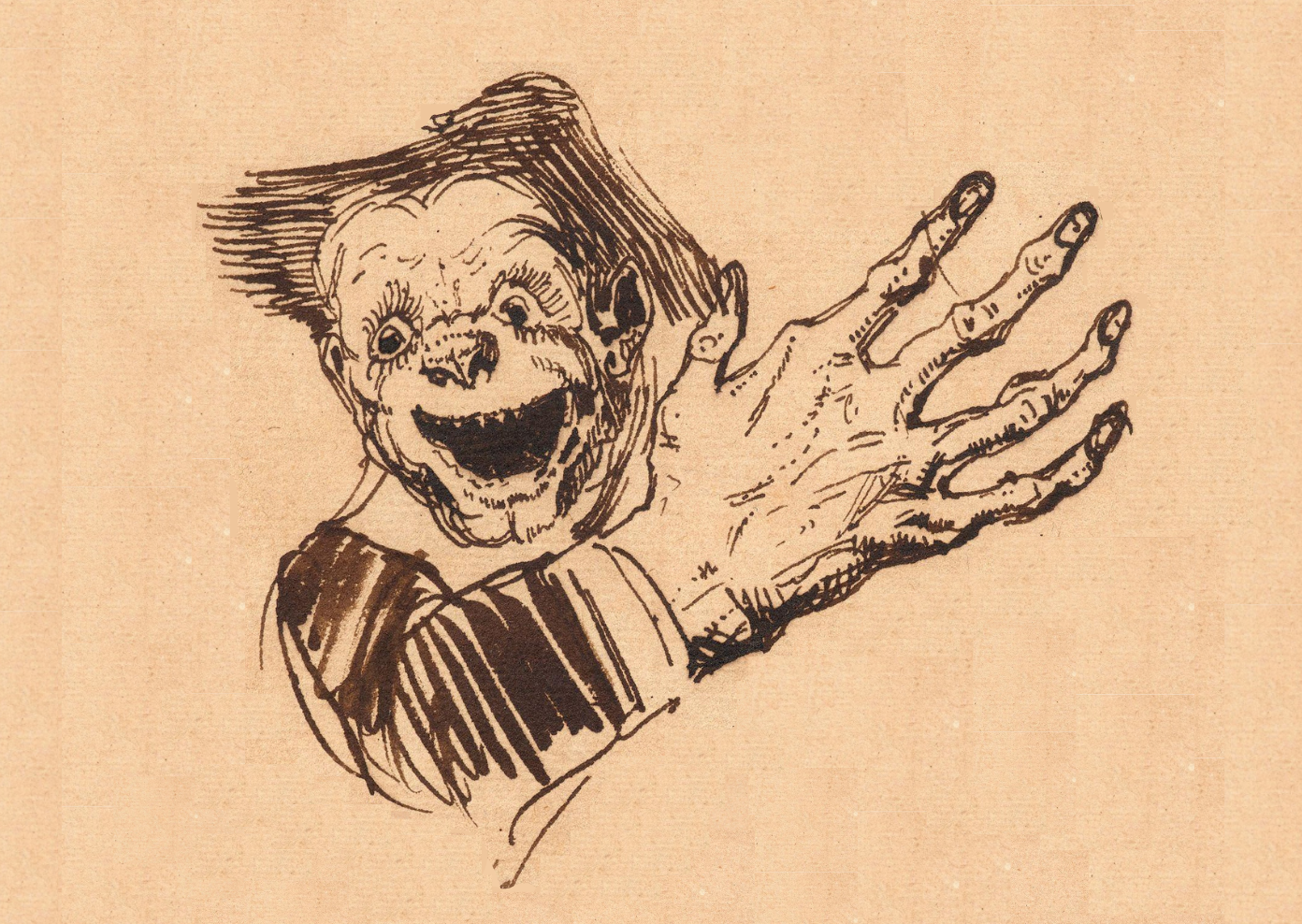
Goya's Caprichos in Nineteenth-Century France: Politics of the Grotesque
ECR French Nineteenth-Century Art Network Research Forum:
Goya's Caprichos in Nineteenth-Century France: Politics of the Grotesque
Dr. Paula Fayos-Pérez - Leonardo Scholarship (BBVA) - Universidad Complutense de Madrid / Université de Strasbourg
Thursday 30 January 2025 1700 (GMT) // 1800 (CET) // 1200 (EST) // 0900 (PST)
The impact of Goya’s work on nineteenth-century French art was immense, long lasting, and multifaceted. Whereas in Spain Goya was associated with his royal portraits, in France he became known as the author of the Caprichos set of prints, which were obsessively studied by artists like Eugène Delacroix—who made over 40 copies. The French Romantics interpreted them as a lampoon of late eighteenth-century Spain, thus overlooking that the true modernity of Goya’s work lies in its universalism, as a mirror reflecting the essence of humankind, unfettered by patriotism—this is also true of his monsters and witches, which are nothing more than the deformed reflection of humans. We could talk about a two-way influence: Goya contributed to shape French Romantic art—and thus the beginning of modern art—and the Romantics in turn modelled his critical image. The established interpretation of Goya is therefore partly based on Romantic stereotypes, many of which have been perpetuated to this day.
Paula Fayos-Pérez is a postdoctoral researcher in Art History (Leonardo scholarship, BBVA Foundation) and is linked to the research groups ARCHE (Université de Strasbourg) and SU+MA (Universidad Complutense de Madrid). Paula obtained her PhD in 2019 from the University of Cambridge. She worked as a researcher at the Wellington Collection (Apsley House), and has published articles in The Burlington Magazine (2019, 2020), Boletín del Museo del Prado (2022), and Print Quarterly (2023). The book Goya’s Caprichos in Nineteenth-Century France. Politics of the Grotesque, based on her dissertation, has just been published by Centro de Estudios Europa Hispánica (2024).
Paula is currently researching the concept of “influence” in Goya and the “Goya network” in nineteenth-century Spain and France.
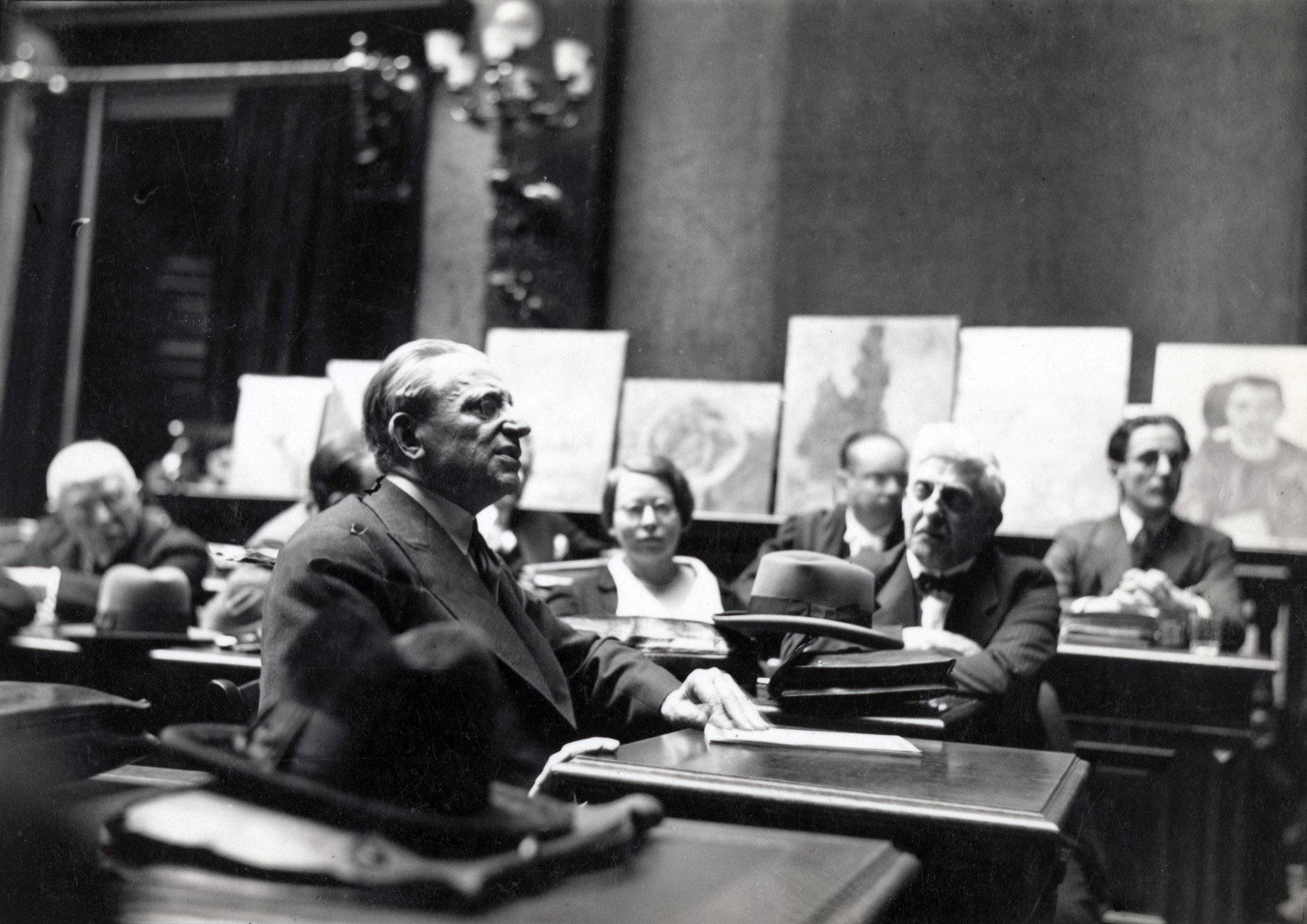
“Modernism Adrift: Meier-Graefe at the Edge of Impressionism”
ECR French Nineteenth-Century Art Network:
“Modernism Adrift: Meier-Graefe at the Edge of Impressionism”
Dr. Victor Claass (INHA)
Thursday 24 October, 1700 (BST) / 1800 (CEST) / 1200 (EDT) / 0900 (PDT)
With his pioneering writings on modern art, German art critic Julius Meier-Graefe (1867–1935) played a decisive role in the canonization of Impressionism at the turn of the twentieth century. By subversively defending the paintings of Manet, Renoir, and Cézanne across the Rhine, he alienated the conservative elites of the Empire, who remained suspicious of the spread of modernism. Throughout his Franco-German career, which was punctuated by virulent polemics and shaken by the outbreak of the First World War, Meier-Graefe fought against the grip nationalism held on artistic narratives. His project to regenerate German culture was thus inseparable from his efforts to federate a pacified Europe of images. While his Francophile progressivism and the vitalism of his approach to painting have sometimes been emphasized, a study of his involvement in the cultural-political debates of his time reveals a more nuanced personality. This paper will analyze the surprising jolts and paradoxes of Meier-Graefe’s transnational career, which alternated between phases of unbridled enthusiasm and intense disillusionment. Meier-Graefe reveals himself as a thinker of the decline of culture and a champion of an idealized vision of modernism, of which Impressionism incarnated both the quintessence and the swan song.
Victor Claass holds a PhD from the Sorbonne University. His doctoral thesis on German art critic Julius Meier-Graefe was awarded the Orsay Museum Prize in 2018. He was a research assistant at the German Center for Art History in Paris (2012–15), before participating in the international research group Bilderfahrzeuge: Aby Warburg’s Legacy and the Future of Iconology (2015–18). After a postdoctoral year at the Louvre Museum, Victor Claass joined the National Institute of Art History in Paris in 2019, where he works as a research coordinator.
He is the author of Jeux de positions. Sur quelques billards peints (2021), a visual and social history of the game of billiards; directed a special issue of scholarly magazine Perspective about art transportation (2022); and recently co-edited En couple. Historiennes et historiens de l’art au travail (2024), a collection of essays about art historian couples. Based on his doctoral project, his latest monograph, L’impressionnisme à ses frontières Le cas Meier-Graefe et la lutte pour l’art moderne en Allemagne was published in late 2023 by the German Center for Art History.
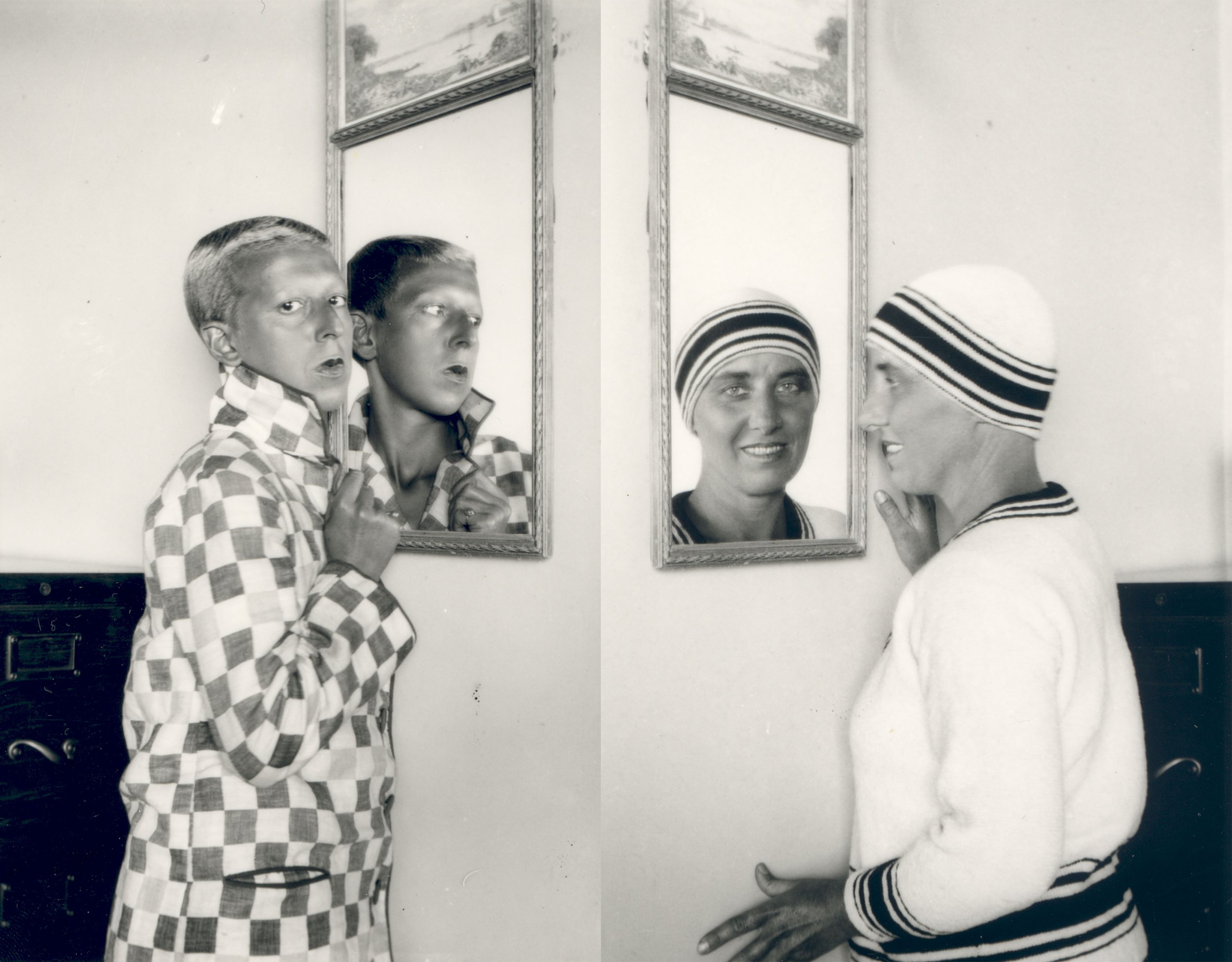
Queer Reflections: Reconstructing the Long Nineteenth Century's History of Homosexuality in Claude Cahun and Marcel Moore’s Vues et visions
ECR French Nineteenth-Century Art Network: “Queer Reflections: Reconstructing the Long Nineteenth Century's History of Homosexuality in Claude Cahun and Marcel Moore’s Vues et visions”
Weds 26 June 1700 (BST) / 1800 (CEST) / 1200 (EDT) / 0900 (PDT)
In 1919, Claude Cahun and Marcel Moore published their first collaborative project, Vues et visions. This small-run, collector’s edition book, written by Cahun and illustrated by Moore, is made up of 25 pairs of illustrated prose poems that link views of the Breton coastal town of Le Croisic in 1912 with visions of an ancient Greco-Roman past. In this paper, I analyse the relationship the book proposes between past and present, looking at how it receives and reworks nineteenth-century narratives about the history of homosexuality that gave ancient Greece a place of honor. Where other queer authors at the turn of the century use this ancient past to solidify modern gay and lesbian identities, Cahun and Moore, I argue, use the same material to disturb the effects of the nineteenth century’s production of sexual categories, thereby challenging rather than reinforcing the cohesion of identity in their present and our own.
Speaker bio:
Hannah Frydman is an assistant professor of French Studies at the University of Washington where they research and teach on modern French history, literature, and culture, with an emphasis on gender, sexuality, economic life, mass culture, and archival methods. They are currently completing a book entitled Between the Sheets: Classified Advertising, Sexuality, and the Moral Threat to Press Freedom in France (under contract with Cornell University Press). Their work on classified advertising and sexuality has been published in Dix-Neuf, French Historical Studies, Histoire, économie & société, Nineteenth-Century French Studies, and Public Books.
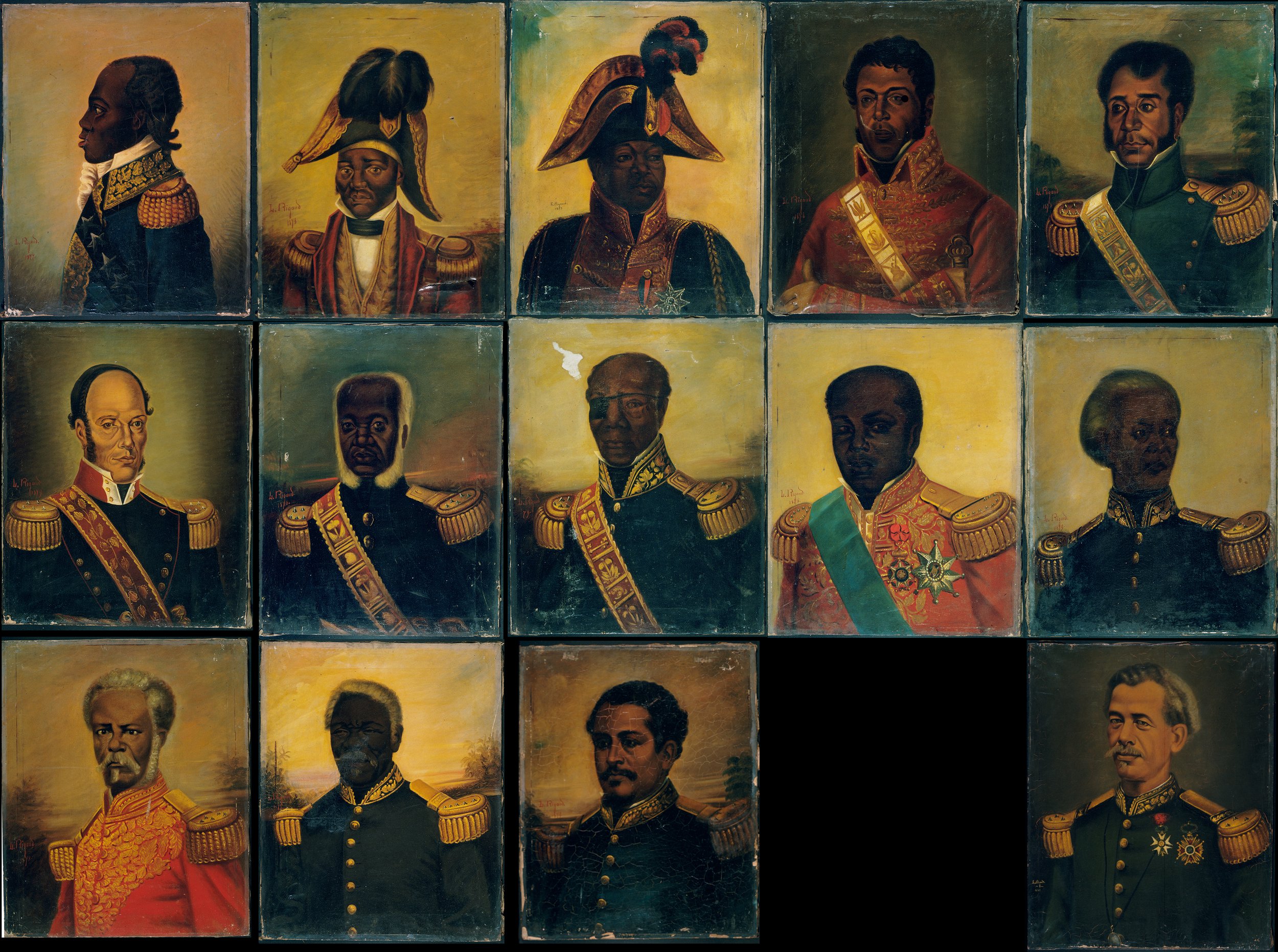
Errant Portraiture in the Black Atlantic: Evolutionary Theory and Racial Aesthetics from Haiti
ECR French Nineteenth-Century Art Network:
Errant Portraiture in the Black Atlantic: Evolutionary Theory and Racial Aesthetics from Haiti
Dr. C.C. McKee (Bryn Mawr College)
Thurs 25 April 1700 (BST) / 1800 (CEST) / 1200 (EDT) / 0900 (PDT)
This paper takes as its foundation a suite of seemingly staid realist portraits by the Haitian painter Louis Rigaud exhibited during the 1884 World’s Cotton Centennial in New Orleans. These paintings portray Haitian heads of state from Toussaint Louverture through Lysius Salomon, who was President during the Exposition. While this paper takes an interest in the prominence of Haiti, symbolic and actual, within a burgeoning international black consciousness, I am most interested in the eccentricities of Rigaud’s paintings, which I characterize as a proto-modernist form of Black internationalism. Among these seventeen canvases there are prominent stylistic and anatomical deformities: tropical chiaroscuro backgrounds at the edge of dissolution, architectonically stiff uniforms, clumsily rendered hands, eyes set askew on the face, and physiognomies that verge on caricature. I position this suite of paintings within the discussion of evolutionary aesthetics to interrogate the value of deformity, as an errant articulation of subjecthood, for black peoples in the ongoing struggle for personhood. Rigaud’s paintings form a unique node within the evolutionary theory and racial anthropology that emerged with slavery’s abolition in the Atlantic World. First, they strike a key with a note from Darwin’s manuscript which intimates that “Deformity is required” in the aesthetic evaluation of beauty. Second, Rigaud’s portraits presage the use of evolutionary theory by the Haitian anthropologist Anténor Firmin to affirm the humanity of blackness. For instance, in his 1885 De l’égalité des races humaines, Firmin draws from Darwin to assert that “an esthetic evolution can be accomplished in a race under the empire of the imagination” in order to affirm the beauty of African diasporic individuals. Distinct from both of these positions, Rigaud’s portraits divert the conventions of Western portraiture to represent a modern free black citizenry askew from eugenicist mobilizations of evolution.
C.C. McKee is Assistant Professor of History of Art at Bryn Mawr College and a current Mads Øvlisen Postdoctoral Fellow at the University of Copenhagen. Their research focuses on the intersections of art, colonialism, and natural science in the modern Atlantic World (c. 1750-1950) with an emphasis on the Caribbean. McKee also researches the exploration of colonialism and slavery’s injurious ecological “afterlives” in contemporary Caribbean and African Diasporic art.
This is a virtual event - the Zoom link will be provided upon signup, a reminder will also be sent out in advance of the event. For any issues please get in contact via info@ecrfrenchart.com
This event is open to anyone with an interest in the topic discussed.
About the Research Forum: ECR French Nineteenth-Century Art Network Research Forum is a virtually held research forum that allows recent PhD graduates, early career researchers as well as research fellows to present their most recent research. The forum aims to expose new and emerging scholarship and scholars engaging in exciting areas of research. The sessions will last around one hour, including an opportunity for questions and answers after the presentation. The events are open to all.
About the Network: The network is formed of current PhD students and ECRs working in nineteenth-century visual culture. We have monthly sessions for ECRs to present virtually , allowing them to develop their skills and share their research. It is global, open to those located anywhere in the world who wish to join. Feel free to join and participate, and we hope to create an engaging, diverse, fun and rewarding community.
For further updates and information on forthcoming events please look at our website or sign up to our mailing list . If you wish, drop us an email info@ecrfrenchart.com
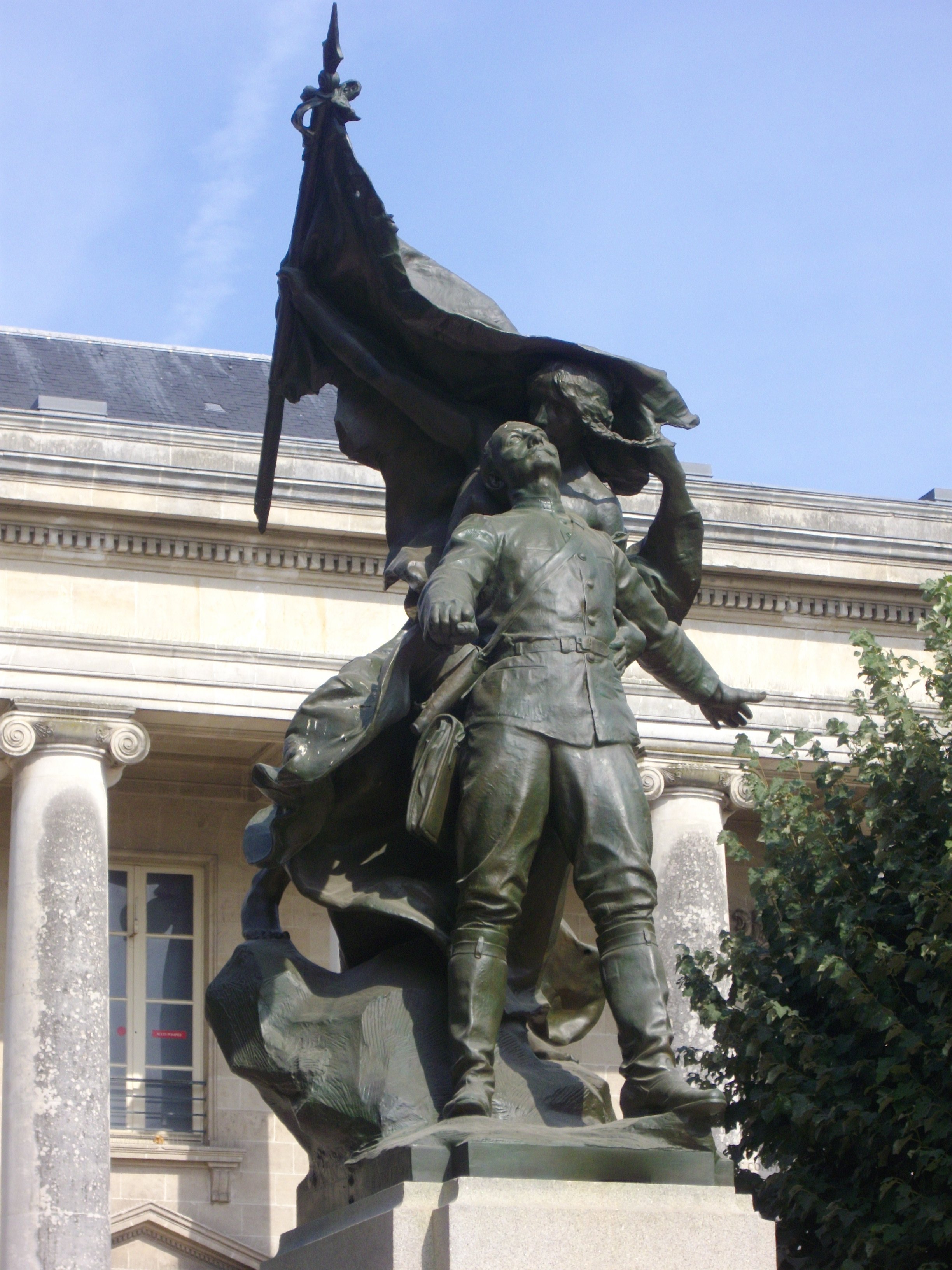
Whose Africa? Transnational Memory of the Second Boer War (1899–1902) and Public Sculpture - Dr. Nicholas Parkinson
ECR French Nineteenth-Century Art Network:
Whose Africa? Transnational Memory of the Second Boer War (1899–1902) and Public Sculpture
Dr. Nicholas Parkinson (Institut National d’Histoire de l’Art)
Thurs 22 February 1700 (GMT) / 1800 (CET) / 1200 (EST) / 0900 (PT)
This talk concerns French sculptural commemoration of a faraway foreign conflict between two colonialist powers in present-day South Africa, the Boer republics (the South African Republic and the Free Orange State) and the United Kingdom. The Second Boer War (1899–1902) sealed British hegemony over South Africa and led the Boer governing politicians into exile. Although rarely discussed today, the Second Boer War played an important role in French foreign politics, in part due to the sizable number of French mercenaries who participated in the war. This paper focuses on Raoul Verlet’s public monument to Colonel Villebois-Mareuil. A veteran of the Franco-Prussian War, Villebois-Mareuil was among the hundreds of French troops who volunteered as mercenaries for the Boer army. Following his death at the Battle of Boshof in 1900, Verlet’s sculpture dedicated to his memory was inaugurated in 1902 in Nantes. I argue that French commemoration of the Second Boer War resulted in a symbiotic relationship between Boer republican government-in-exile, who, despite their history as colonizers, wanted to tie the memory of their war to anti-Imperialism, and France, who wanted to project an image as the defender of liberalism.
Nicholas Parkinson is a Carlsberg Foundation Internationalisation Fellow hosted by the Institut National d’Histoire de l’Art. His research explores the relationship between art and power nineteenth-century international and local politics, especially through sculpture, urban space, and historiography.
This event will take place at 1700 GMT
This is a virtual event - the Zoom link will be provided upon signup, a reminder will also be sent out in advance of the event. For any issues please get in contact via info@ecrfrenchart.com
This event is open to anyone with an interest in the topic discussed.
About the Research Forum: ECR French Nineteenth-Century Art Network Research Forum is a virtually held research forum that allows recent PhD graduates, early career researchers as well as research fellows to present their most recent research. The forum aims to expose new and emerging scholarship and scholars engaging in exciting areas of research. The sessions will last around one hour, including an opportunity for questions and answers after the presentation. The events are open to all.
About the Network: The network is formed of current PhD students and ECRs working in nineteenth-century visual culture. We have monthly sessions for ECRs to present virtually , allowing them to develop their skills and share their research. It is global, open to those located anywhere in the world who wish to join. Feel free to join and participate, and we hope to create an engaging, diverse, fun and rewarding community.
For further updates and information on forthcoming events please look at our website or sign up to our mailing list . If you wish, drop us an email info@ecrfrenchart.com

Masculinity and the Post-Imperial Imago in Paul Delaroche’s Le Duc d’Angoulême à la Prise du Trocadéro (1828)
ECR French Nineteenth-Century Art Network Research Forum:
Masculinity and the Post-Imperial Imago in Paul Delaroche’s Le Duc d’Angoulême à la Prise du Trocadéro (1828)
7 December 2023—1700 (GMT)
This presentation examines the attempt to revive the representation of military strength in post-Imperial France. One of the primary efforts to champion a renewed image of martial might during the Restoration was concentrated in a commission that resulted in Paul Delaroche’s portrait Le Duc d’Angoulême à la Prise du Trocadéro (1828). During the Revolutionary and Napoleonic periods, military service was promoted through patriotic propaganda. France’s defeat at the end of the Napoleonic era created a sense of rupture between the ideal of masculinity and its attainability. The opportunity to reclaim military power arose in 1823 when the French army, led by Duc d’Angoulême, reinstated King Ferdinand VII to the Spanish throne. Although the portrait ostensibly depicts the climactic victory of the campaign, Delaroche’s portrait presents a restrained, monarchical form of martial heroism, differing from the exaggerated Napoleon-era portrayal. This research highlights the evolving conception of masculine valor in the post-Napoleonic era.
Dr. Trenton Olsen is an assistant professor of modern art history in the Department of Art History and Visual Culture at Lindenwood University in St. Charles, Missouri. The research he will present draws from his current book research project which investigates portraiture, fashion, and masculinity in post-Napoleonic France. Dr. Olsen graduated with his PhD in art history from The Ohio State University in 2020. Beyond the scope of his current research project, he is also interested in and has published several articles on digital art history and the integration of AR/VR technology into the art history classroom. Outside of these professional interests, he enjoys exploring new restaurants and dishes with his spouse, and geeking out over all things Harry Potter or Greek mythology with his kiddos.
This event will take place at 1700 GMT
This is a virtual event - the Zoom link will be sent out on the day. For any issues please get in contact via email and we will try and help as best we can.
This event is open to anyone with an interest in the topic discussed.
About the Research Forum: ECR French Nineteenth-Century Art Network Research Forum is a virtually held research forum that allows recent PhD graduates, early career researchers as well as research fellows to present their most recent research. The forum aims to expose new and emerging scholarship and scholars engaging in exciting areas of research. The sessions will last around one hour, including an opportunity for questions and answers after the presentation. The events are open to all.
About the Network: The network is formed of current PhD students and ECRs working in nineteenth-century visual culture. We have monthly sessions for ECRs to present virtually , allowing them to develop their skills and share their research. It is global, open to those located anywhere in the world who wish to join. Feel free to join and participate, and we hope to create an engaging, diverse, fun and rewarding community.
For further updates and information on forthcoming events please look at our website or sign up to our mailing list . If you wish, drop us an email info@ecrfrenchart.com
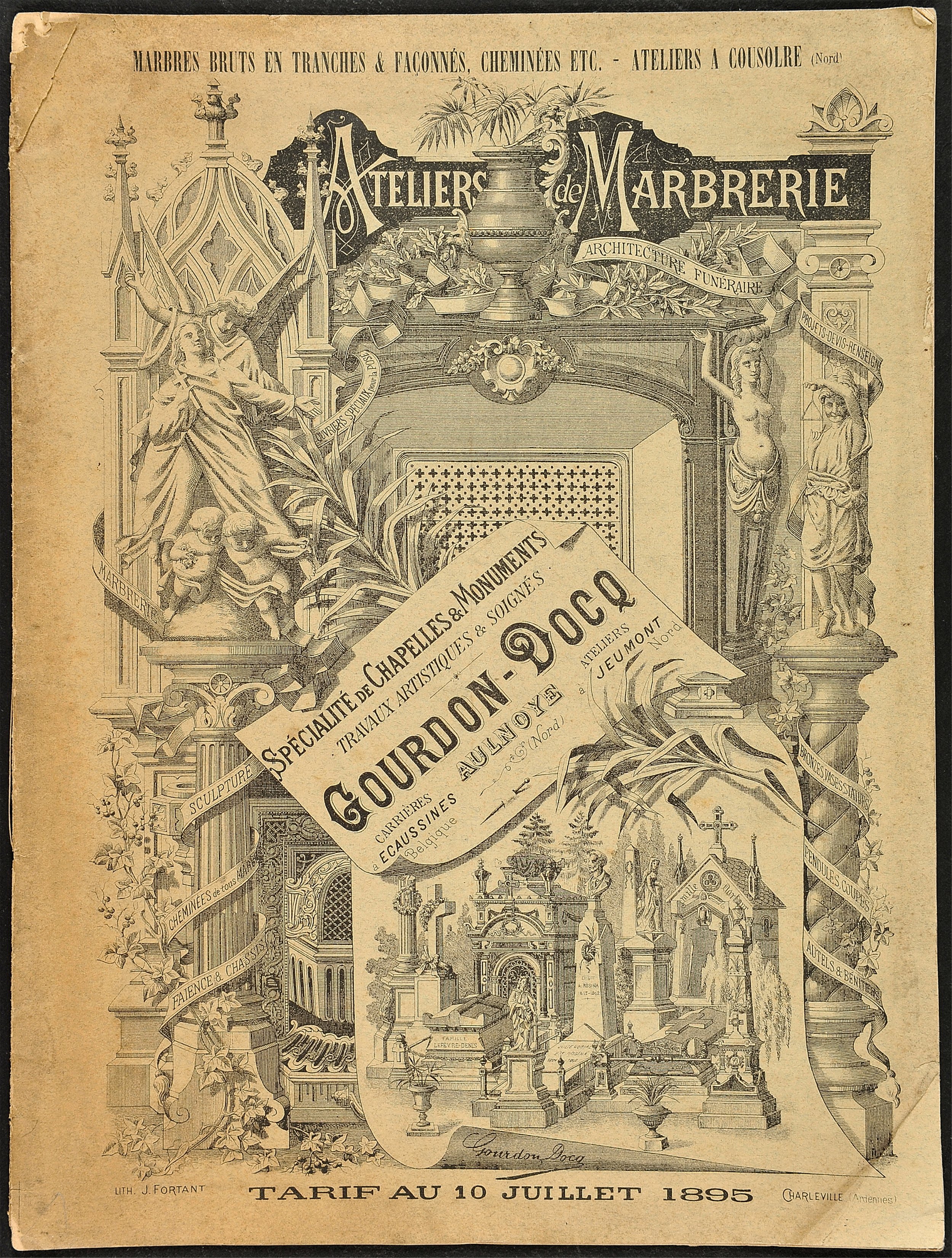
Bespoke, Ready-Made . . . or Something in Between? Modularity and the Market for Funerary Monuments in 19th-Century Paris
ECR French Nineteenth-Century Art Network Research Forum:
Bespoke, Ready-Made . . . or Something in Between? Modularity and the Market for Funerary Monuments in 19th-Century Paris
19 October 2023—1700 (BST)
Early 19th-century burial reforms in France formulated a heavily regulated system of burial that, most radically, promised all citizens the right to separate burial plots within public cemeteries, regardless of class or religion. This practice not only transformed how people were buried, butalso how the lives of otherwise unremarkable individuals were commemorated and valued. This talk will address the popular market for funerary monuments and the marbriers who produced them. Historically decried as cheap reproductions of monumental funerary architecture, the marbriers’ output was significantly customizable by necessity. Marketed and sold to a highly segmented clientele with diverse budgets and taste preferences, the “modern” style tombs of this period gesture towards a previously unexplored relationship to the architectural éclectisme of the late 19th and early 20th centuries.
Kaylee P. Alexander is the Assistant Research Data Librarian in the J. Willard Marriott Libraryat the University of Utah. She received her PhD in 2021 from Duke University, where she wasalso a research assistant with the Duke Art, Law, and Markets Initiative. Kaylee’s firstmonograph,A Data-Driven Analysis of Cemeteries and Social Reform in Paris, 1804–1924, wasrecently published with Routledge’s Research in Art History series.
This event will take place at 1700 BST
This is a virtual event - the Zoom link will be sent out on the day. For any issues please get in contact via email and we will try and help as best we can.
This event is open to anyone with an interest in the topic discussed.
About the Research Forum: ECR French Nineteenth-Century Art Network Research Forum is a virtually held research forum that allows recent PhD graduates, early career researchers as well as research fellows to present their most recent research. The forum aims to expose new and emerging scholarship and scholars engaging in exciting areas of research. The sessions will last around one hour, including an opportunity for questions and answers after the presentation. The events are open to all.
About the Network: The network is formed of current PhD students and ECRs working in nineteenth-century visual culture. We have monthly sessions for ECRs to present virtually , allowing them to develop their skills and share their research. It is global, open to those located anywhere in the world who wish to join. Feel free to join and participate, and we hope to create an engaging, diverse, fun and rewarding community.
For further updates and information on forthcoming events please look at our website or sign up to our mailing list . If you wish, drop us an email info@ecrfrenchart.com
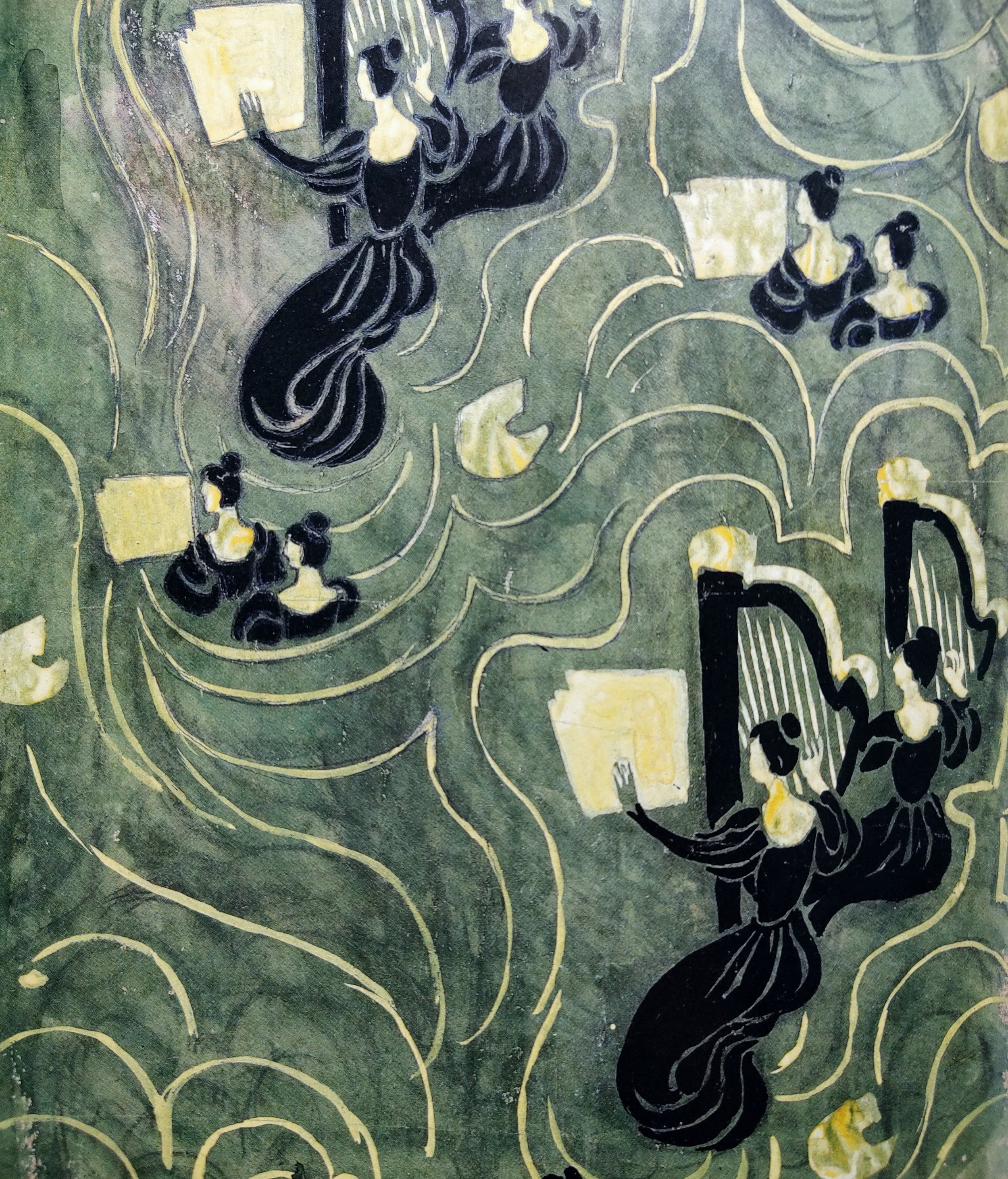
Composing the Decorative: Maurice Denis, Music, and the Search for French Cultural Tradition
Maurice Denis (1870-1943) is best known today for his involvement with the group of young painters known as the Nabis, who became well-known in Paris during the early 1890s. But much work remains to be done on assessing the wider significance both of his turn-of-the-century ‘conversion’ to classicism, and of his increasingly earnest determination to revitalize sacred art in France. This talk concentrates primarily on the artist’s turn-of-the-century post-Nabi decorative work, considering how it was not only shaped by, but also helped to strengthen, classicising and religious tendencies within French art, as well as associated conservative ideological currents within French culture more broadly. It argues that an examination of Denis’s links to his musical contemporaries (principally the composer Vincent d’Indy and the pupils of César Franck), who themselves were active in these debates on matters of cultural identity, reveals much about the significance of this art and of the wider character of a renascent cultural nationalism in early twentieth-century France.

La médaille et le jury de récompense au Salon (1848–1880)
Devenues systématiques au début du XIXe siècle, les médailles distribuées à l’Exposition de peinture et de sculpture de Paris permettent de récompenser et de distinguer certains envois de la masse des œuvres exposées. Elles forment un enjeu particulièrement conséquent dans la seconde moitié du XIXe siècle, alors qu’explose le nombre d'exposants et de prétendants à la carrière artistique, comme en témoigne l’instauration, en 1848, d’un jury de récompense. Le but de cette conférence sera alors d’examiner les diverses modalités d’attribution de la médaille entre 1848 et 1880. Selon un découpage chronologique, elle présentera la manière dont est composé le jury de récompense ; le nombre et les éventuels quotas relatifs aux médailles distribuées ; les multiples catégories et sommes associées à la médaille ; les prérogatives (droit de vote, exemption) auxquelles celle-ci donne droit.
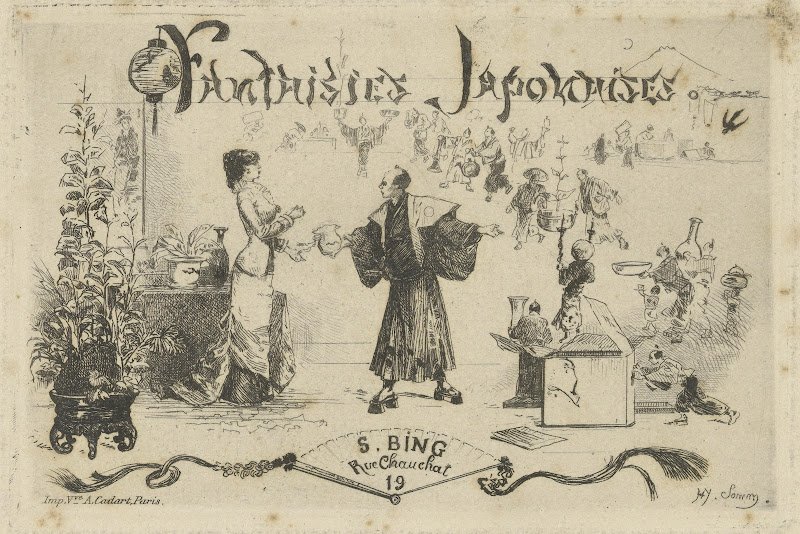
Fleshly Japonisme: Japanese Aesthetics and Sensing Bodies at the Turn of the Century
Japonisme, or the taste for Japan, was a pivotal cultural phenomenon in nineteenth-century Europe and North America, giving rise to modernism and providing opportunities to unlearn the norms of one’s home culture in the act of self-invention. One of japonisme’s most outstanding iterations, however, has eluded critical scrutiny: middle-class women’s bodily experiences of Japanese and Japan-inspired goods. Ideas of Japan reached women as something capable of physically and psychologically affecting their bodies, as they handled and purchased Japanese images and objects, donned kimonos, and applied cosmetics scented with “Japanese” fragrances. Through a series of case studies, this book explores ways that japonisme allowed women to reimagine themselves beyond Western gender norms.
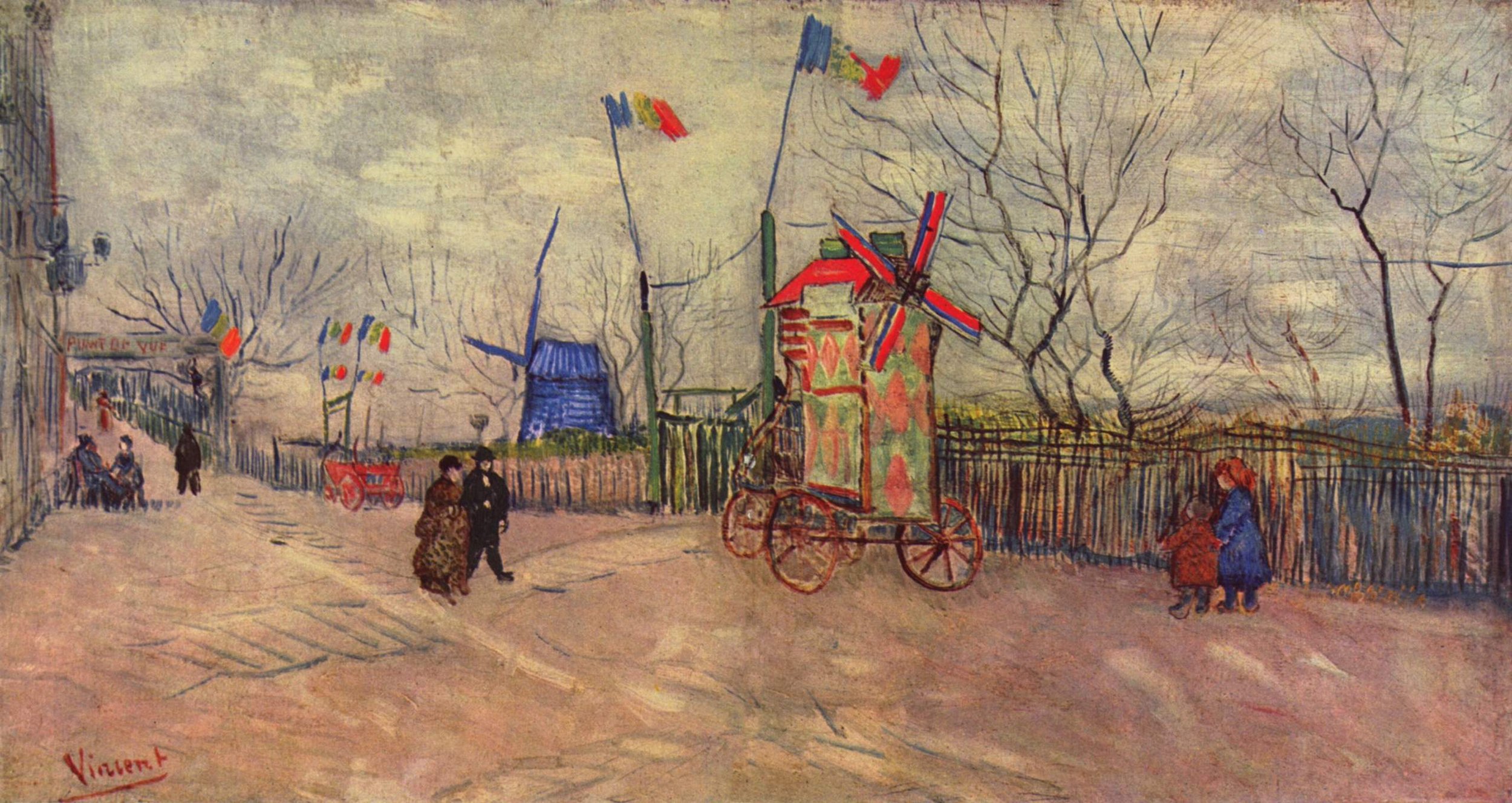
ECR French Nineteenth-Century Art Research Forum: Van Gogh & The Visual Culture of Paris - Dr. Christa DiMarco
When Vincent van Gogh arrived in Paris in 1886, the city was still grappling with the aftermath of the 1871 Paris Commune. Social reform efforts that aimed to address the lower classes, polarizing political figures such as the Communard Louise Michel, the novels of Émile Zola, and the construction of the Sacré-Cœur Basilica all made the presence of the Commune felt during the 1880s. Van Gogh’s Paris-period works address the socio-political atmosphere of Parisian reform in Montmartre and the banlieue: from cramped factory conditions, tourism, urban renewal initiatives, and even clandestine sex work. Christa DiMarco’s talk will investigate how Van Gogh’s Parisian paintings simultaneously sympathize with the lower classes and call attention to the ways in which reform initiatives unintentionally become compromised.
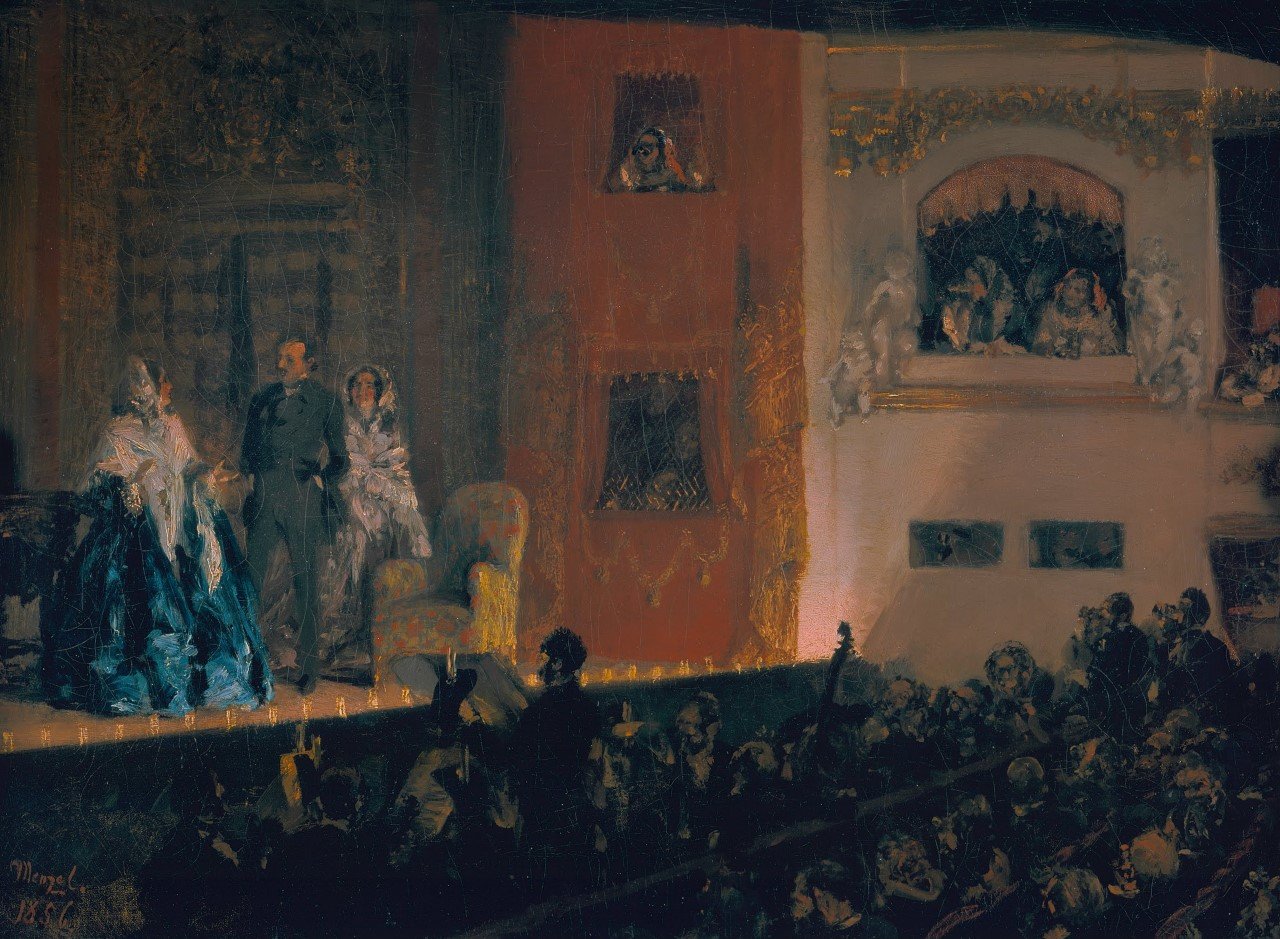
ECR French Nineteenth-Century Art Research Forum: From Theatrical Stages to Domestic Interiors - Dr. Barbara Bessac
My talk will introduce the main developments of my current research on the theatricalisation of home decoration regarding the evolution of stage design practices in the nineteenth-century. It will show how theatrical stages, as collaborative artistic platforms, enhanced the dissemination of new decorative practices and trends in home furnishing and clothing. It will also focus on the relationship between individuals and objects, both on and off stage, and the symbolism of interior material environments and their layout. This work highlights the circulation of decorative arts around the theatres and proposes a reinterpretation of the history of the decorative arts of the second nineteenth-century by including the significant role of the performing arts. Some of the archives used for this research will be presented alongside my argument in order to discuss how to create, document and manage an interdisciplinary research corpus from various collections in France and in England.
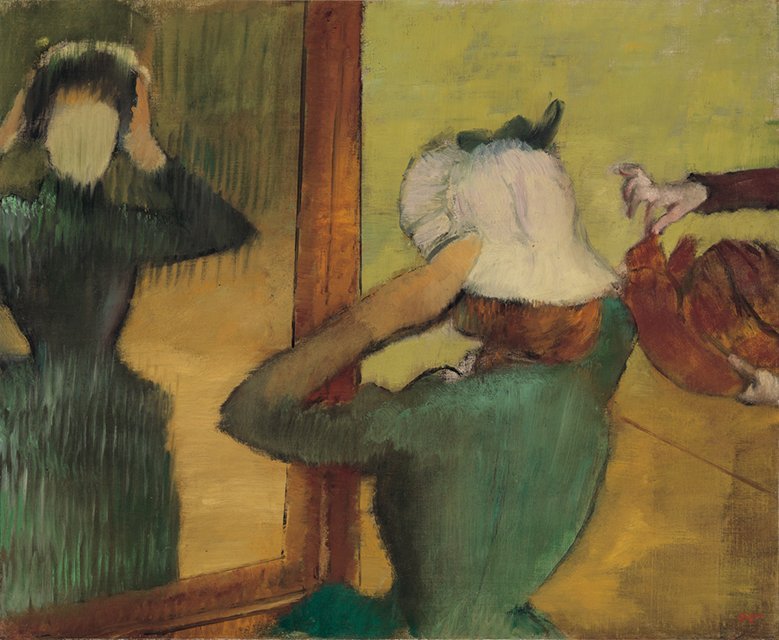
ECR French Nineteenth-Century Art Research Forum: Between Two Worlds: Picturing the Mirror in the Age of Realism - Dr. Nikki Georgopulos
While seemingly ubiquitous throughout the history of European art, the mirror appeared with unprecedented frequency and potency in French painting of the mid-nineteenth century. Chemical and mechanical advances in mirror-making technology and the boom of consumer capitalism meant that mirrors were more readily available than ever before. Artists responded in kind, using the mirror as both a formal and symbolic motif as a proving ground for questions of mimesis, truth, objectivity, and selfood occasioned by contemporary discourses of Realism. This talk provides an overview of what is very much a work in progress: a book project attending to the confluence of these two concomitant developments: the popularity and availability of mirrors brought on by the Industrial Revolution, and the rise of Realism as a critical aesthetic tendency. Though both the mirror and the Realist painting ostensibly share the expectation of a straightforward, mimetic reflection of the world, Realist mirrors more often bend, warp, dazzle, and distort. Acting as a metaphor for its own making, the Realist mirror is a lens through which we can interrogate our long-held assumptions about Realism and its supposedly positivist, empirical mode of representation.
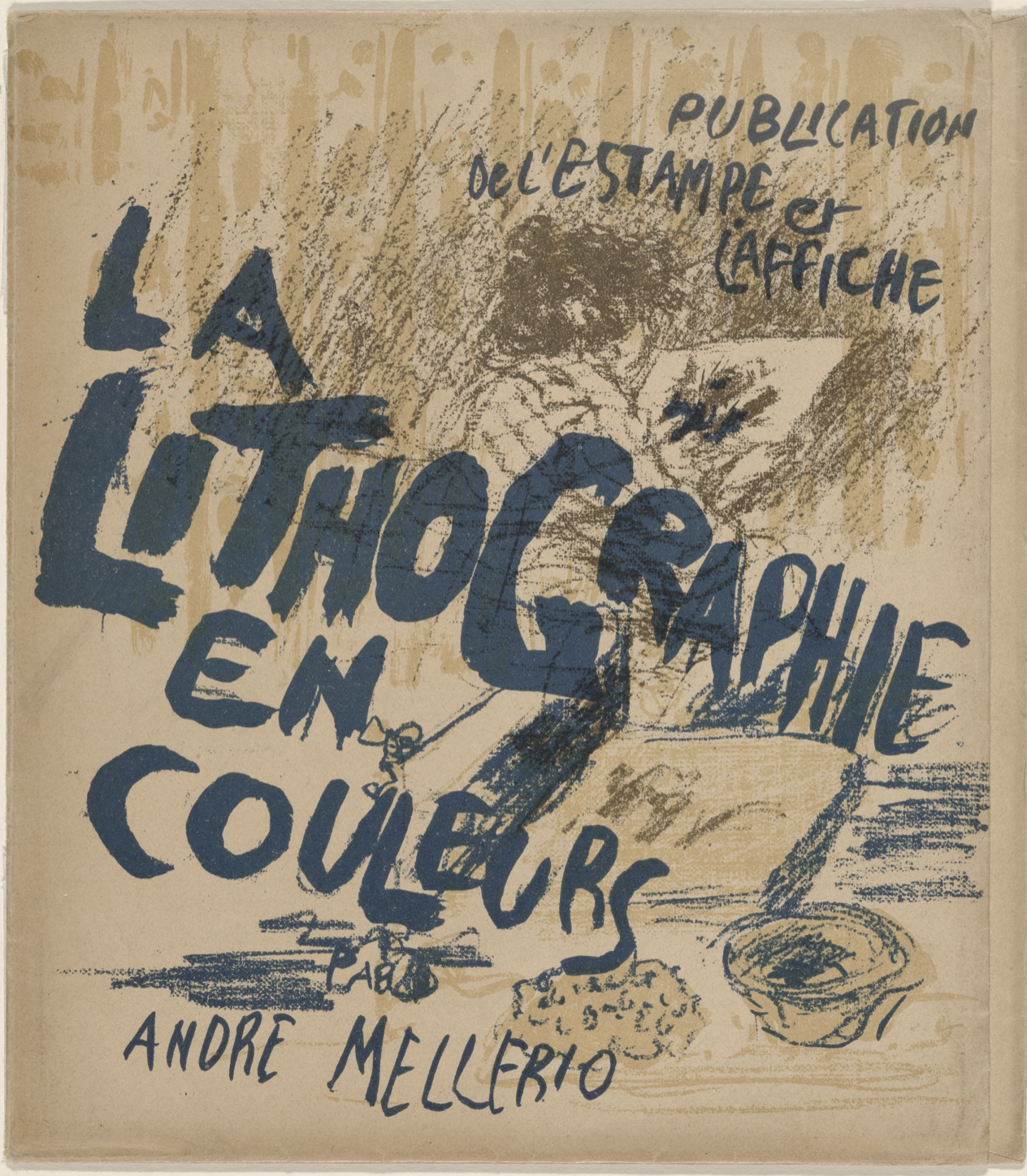
The Printer’s Craft: Collaboration in Color Lithography in Fin-de-Siècle France - Dr. Natalia Lauricella
In fin-de-siècle Paris, avant-garde artists turned to the medium of color lithography to explore new modes of expression. This practice, however, was technically complex and thus required the involvement and expertise of a professional printer. Many artists, including the Nabis, the Neo-Impressionists, and Auguste Rodin, sought the help of master printer Auguste Clot. In turn, Clot became an invaluable collaborator, performing the various labor-intensive steps required to produce color art lithographs, from preparation to final printing. This talk explores the master printer’s craft and labor in the production of original color lithographs in fin-de-siècle France in order to recast the history of modern art through the lens of collaboration.
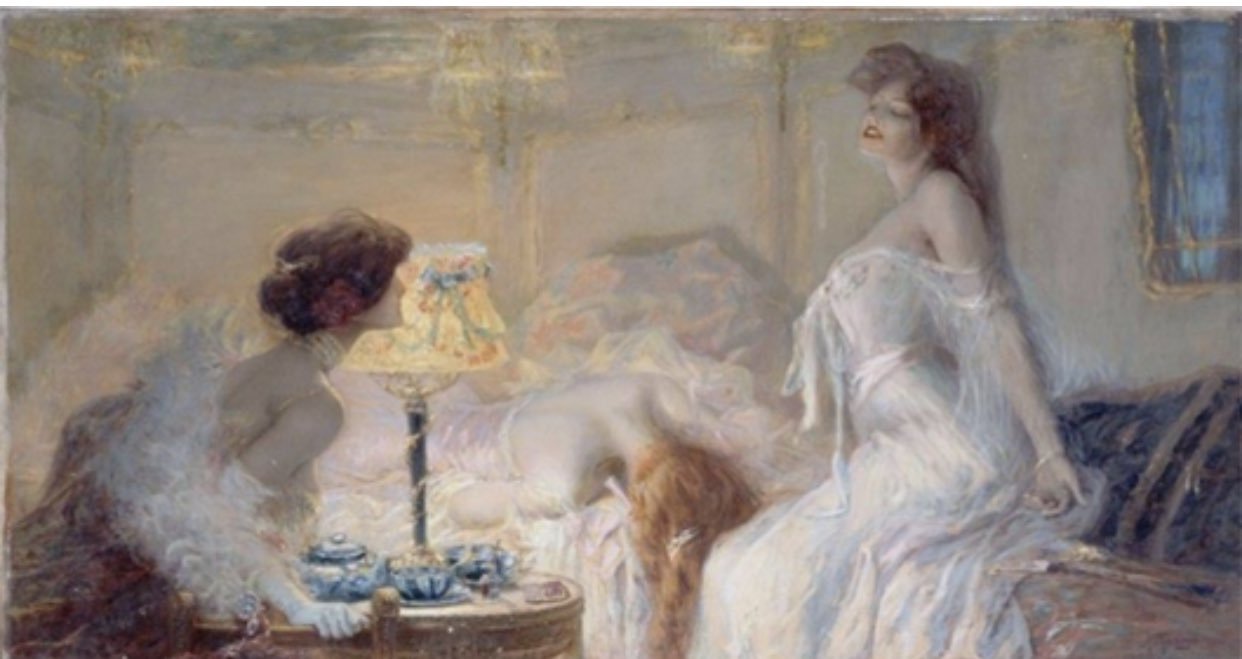
ECR French Nineteenth-Century Art Network Research Forum: Art and Text at the Fin-de-Siècle: Sensationalising Addiction to Boost Sales
At the end of the nineteenth century, French newspaper editors explored new ways of attracting readers’ attention in an increasingly saturated sector, driving profits through two interconnected methods: sensationalism and images. Artists in Paris, particularly foreign artists trying to make a name for themselves, used comparable techniques to stand out in a similarly crowded art market. This talk uses the example of the morphinomane (morphine addict) to explore how newspaper editors and artists alike used formulaic tools, such as the figure of ‘the addict’, to increase publicity at the expense of accuracy. If capitalism is the driving force behind sensationalism, the addict can be understood as a commodity. Sensationalising drug addiction in fin-de-siècle art and text fuelled a morbid desire to read and see more.
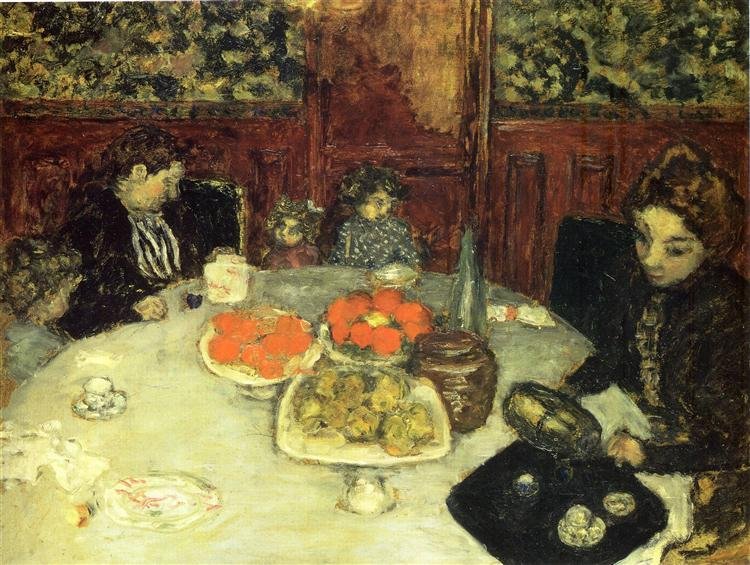
ECR French Nineteenth-Century Art Network Research Forum: Rethinking Bonnard, Rethinking Painting After Impressionism
Pierre Bonnard (1867–1947) is frequently seen as a transitional figure between Impressionism and twentieth-century modernism: he was described as a belated Impressionist during his lifetime, and even recent interpretations of his work implicitly treat him in the same way. This talk will reconsider how Bonnard should be understood in relation to Impressionism, while also reconnecting the artist's later work to his interests in the 1890s. It is based on my forthcoming book, Pierre Bonnard Beyond Vision. This talk will be followed by an informal Q&A, where I'll be happy to discuss any aspect of the book itself or the process of PhD to book.
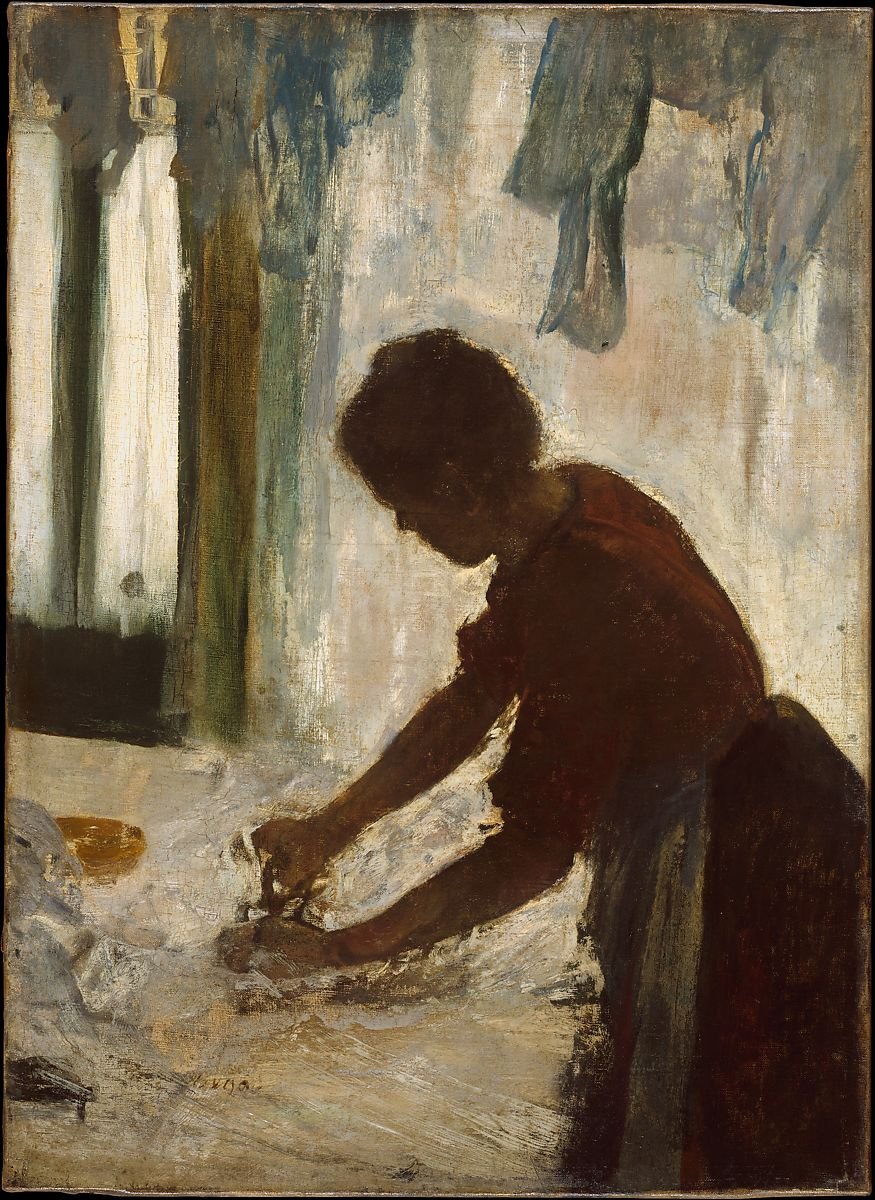
ECR French Nineteenth-Century Art Network Research Forum: Impressionism at the Margins: Colonialism and the Critical Reception
French impressionism has come to be understood as a standard bearer of Frenchness, modernity, and more recently, whiteness. Yet in the nineteenth century, one of the most common modes of marginalising impressionism was to argue that it instead threatened notions of national identity, racial identity, and progress. This talk introduces a colonial imaginary in the critical reception of impressionism that was one register through which writers expressed and deflected anxiety about the art. The issues at stake for early audiences—of colour and legibility, training and tradition, centres and margins—were framed in the context of imperialism, population shifts, and immigration. Their writing bears its mark.








